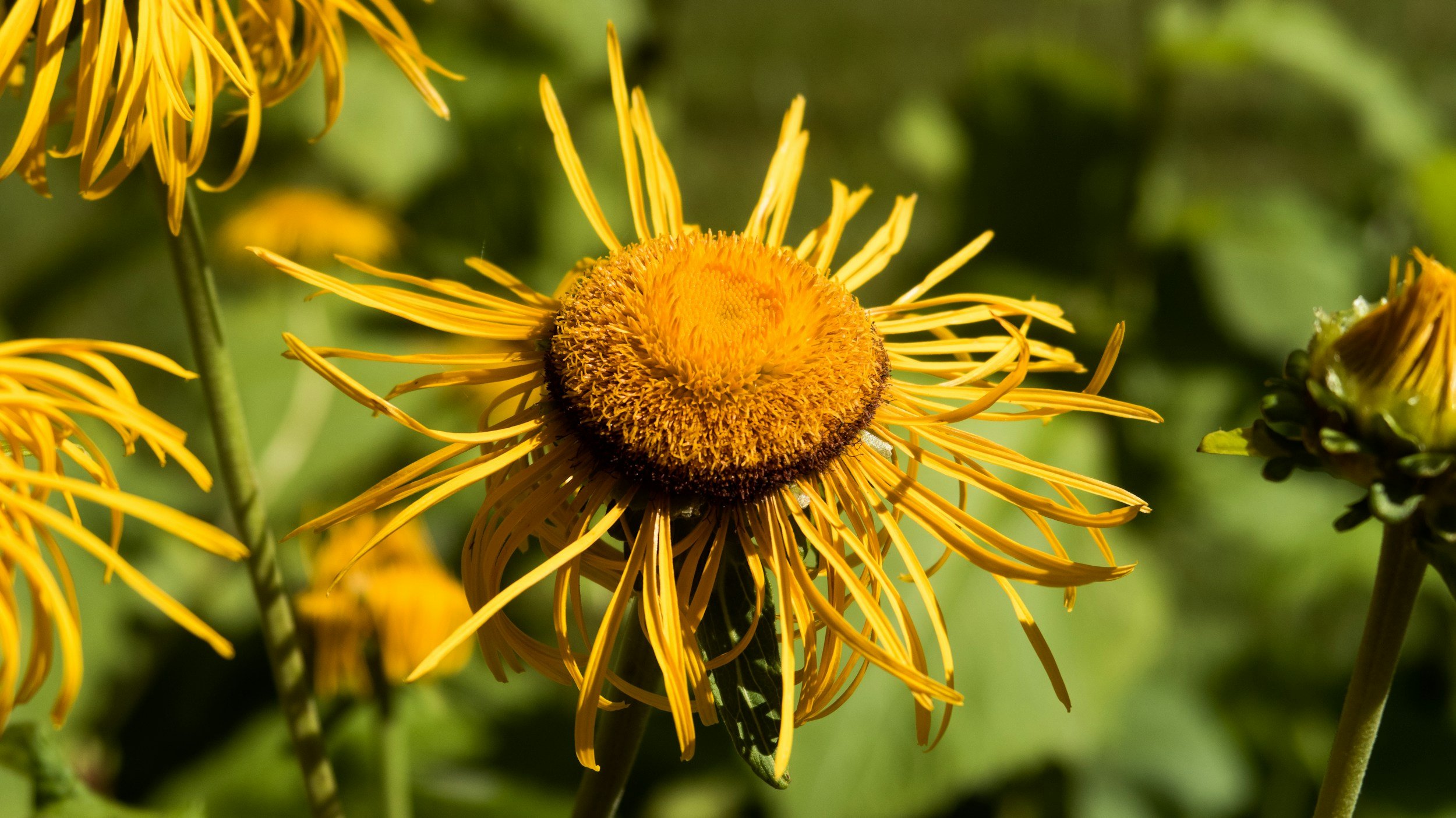
Elecampane
Elecampane (Inula helenium)
Plant family
Asteraceae
Parts used
Root (radix)
Rhizome (rhizoma)
Typical forms of prescription
Tincture
Syrup
Decoction
Elecampane (Inula helenium) - Clinical Snapshot
Actions
Relaxing expectorant
Antitussive (cough suppressant)
Diaphoretic (promotes sweating)
Stomachic (supports digestion)
Antimicrobial
Astringent
Anti-catarrhal (reduces mucus)
Diuretic (increases urine output)
Alterative (supports gradual restoration of health)
Carminative (relieves gas)
Bitter (stimulates digestion)
Anthelmintic (expels worms)
Indications
Respiratory conditions:
Bronchial coughs
Bronchitis
Emphysema and dyspnoea
Asthma and bronchitic asthma
Chronic Obstructive Pulmonary Disease (COPD)
Tuberculosis (TB)
MRSA (Methicillin-resistant Staphylococcus aureus)
Influenza
Heart failure (aids lung recovery)
Digestive issues:
Poor digestion
Nausea
Diarrhoea
⚠️Cautions / Safety⚠️
May cause allergic reactions in individuals sensitive to the Asteraceae family
Can cause contact dermatitis
Do not use during pregnancy without professional guidance
Contraindicated during lactation
Inula helenium
Phytochemistry and Pharmacology
Sesquiterpene Lactones
Includes: Alantolactone, isoalantolactone
Action: Expectorant, antimicrobial, anthelmintic, anti-inflammatory
Use: These pungent compounds are responsible for elecampane’s classic action as a deep lung expectorant. They help loosen thick mucus, fight bacterial and fungal infections, and reduce inflammation in the lungs and gut. Alantolactone also shows activity against intestinal parasites, making elecampane useful in both respiratory and digestive complaints.
Triterpenes
Action: Anti-inflammatory, hepatoprotective
Use: Triterpenes contribute to elecampane’s tissue-soothing and liver-supporting properties. They reinforce its use in chronic inflammatory conditions affecting the lungs and the digestive system.
Essential Oils
Includes: Helenin (a mixture of alantolactone and isoalantolactone), eudesmol, azulene
Action: Antiseptic, warming, expectorant
Use: Elecampane’s volatile oils offer warming, drying, and lung-clarifying actions. They help reduce respiratory congestion, promote perspiration, and deliver antiseptic effects to the lungs and gut. These are best preserved in low-heat preparations like infusions and cold percolations.
Inulin
Action: Prebiotic, gently laxative, blood sugar modulating
Use: Inulin is a soluble fibre that feeds beneficial gut bacteria and supports gastrointestinal health. It also has mild blood sugar-regulating and immune-supportive effects, grounding elecampane’s use as a restorative digestive tonic alongside its respiratory benefits.
Traditional use
Traditionally, elecampane was used for digestive issues, from intestinal parasites to stagnant digestion. It was also reported to protect users from ‘elf-shot’, an ancient/medieval category for diseases of unknown cause, including coughs stemming from tension and grief.
Clinical Discussion
Elecampane is a lung herb. It is an aromatic, pungent, warming, bitter herb used for productive, wet coughs for cutting through and bringing up mucus. When excess mucus affects all of the upper respiratory tract, such as sinusitis and earaches, it is also helpful for treating children. Because it is bitter, it is also digestive, and so where there are digestive issues due to overproduction of phlegm or coughs due to digestive problems, this is an ideal remedy. The traditional use of protecting from ‘elf-shot’ is theorised by some herbalists as being a description of chronic fatigue, where elf arrows are draining energy. Elecampane is now used to support chronic fatigue, which may be the reason for the old terminology. It is also considered suitable for supporting gut flora because it is high in inulin, like dandelion.
Cultivation/Harvesting
Elecampane is a hardy perennial that prefers deep, well-drained soil in full sun to partial shade. It grows tall and stately, often over 1.5 metres, and thrives in herb gardens and meadow edges.
For medicinal use, harvest the roots from plants that are at least three years old. This allows time for the roots to fully develop their aromatic, resin-rich compounds. Carefully dig around the plant in autumn, when the aerial parts have died back and the plant's energy has returned to the root.
You can take the thick lateral roots for drying and replant the crown or central root to continue growing. Wash roots thoroughly and dry at a low temperature to preserve volatile oils.
Key Botanical Features of Elecampane (Inula helenium)
Growth
Type: Perennial herb.
Size: Typically 1–2 meters (3–6 feet) tall.
Stem: Erect, tall, and hairy, often branching near the top. The stem is smooth but may have a rough texture due to fine hairs.
Leaves
Type: Alternate, simple.
Shape: Large, ovate (heart-shaped) to lanceolate (narrow and pointed) with rough, toothed edges.
Size: Lower leaves can be 30–40 cm (12–16 inches) long, while upper leaves are more diminutive.
Texture: The leaves are coarse, hairy on both sides, with the underside often paler and more densely pubescent.
Colour: Dark green on the upper surface and paler green underneath.
Flowers
Type: Large, daisy-like composite flowers, characteristic of the Asteraceae family.
Size: Flower heads are 6–8 cm (2.4–3.1 inches) in diameter.
Colour: Bright yellow, with long, narrow ray florets and a central disk of yellow florets.
Flower Arrangement: The flowers are arranged in panicles (loose, branching clusters).
Blooming Period: Summer to early fall, typically from July to September.
Pollination: Attracts various pollinators, particularly bees and butterflies.
Fruits & Seeds
Fruit Type: Achene (dry, single-seed fruit), typical of the Asteraceae family.
Seed Dispersal: Wind-dispersed, assisted by a pappus (hair-like structure) on the seed.
Size: The achenes are small and light, helping them travel easily with the wind.
Roots
Type: Thick, fleshy taproot that grows deep into the soil.
Function: The root stores nutrients and helps the plant survive harsh conditions. It is also a part of the plant used in herbal medicine.
Colour: The root is typically yellowish-brown on the outside with a yellow inner flesh.
Habitat & Growth Conditions
Climate: Prefers temperate regions and can tolerate cooler climates.
Soil: Prefers moist, well-drained, fertile soils, often found in areas with rich, loamy soil.
Sunlight: Grows best in full sun but can tolerate partial shade.
Distribution: It is native to Europe and Asia but has been naturalised in North America. It is commonly found in meadows, grasslands, riverbanks, and disturbed areas.
Sustainability/Conservation
Widely cultivated.
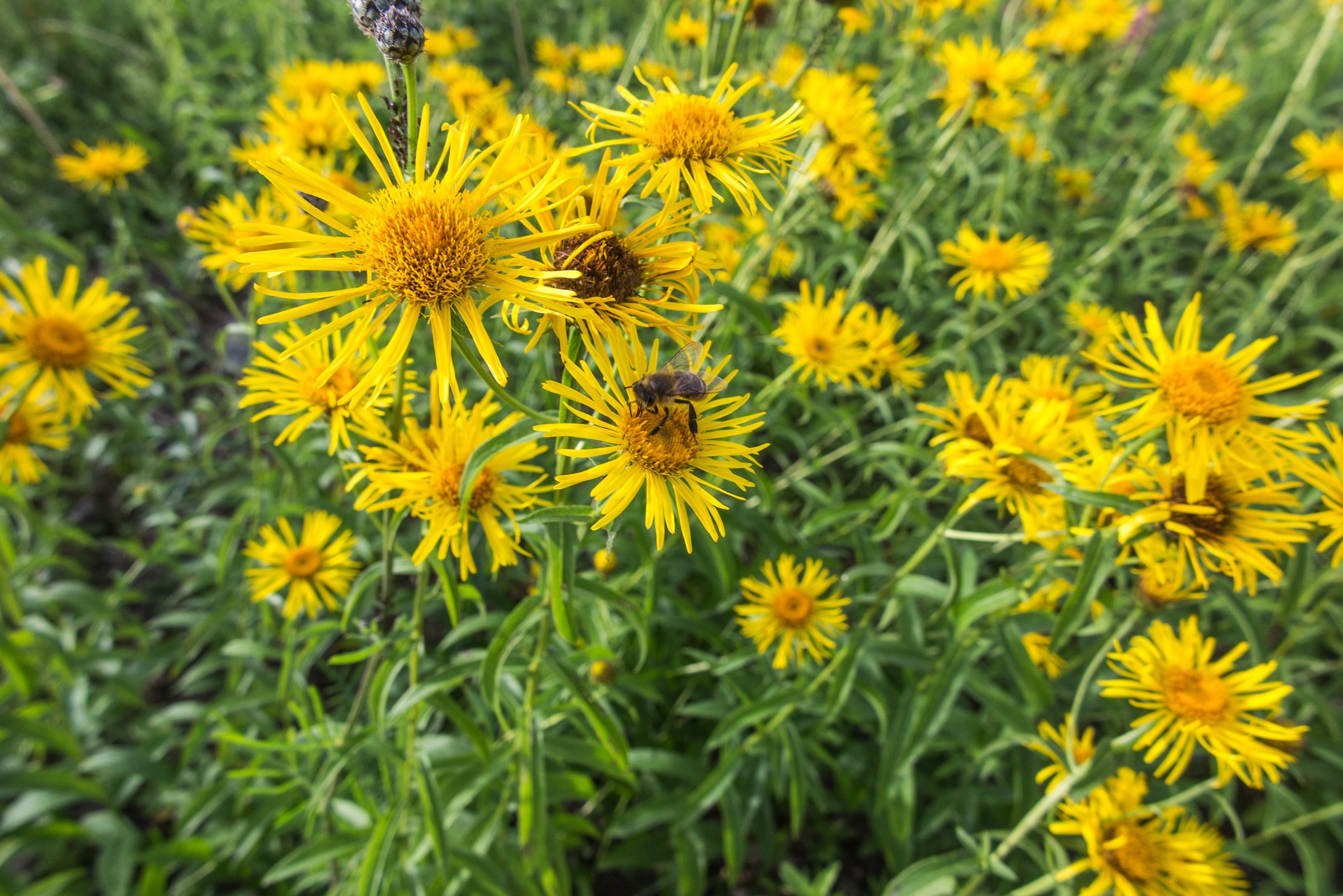
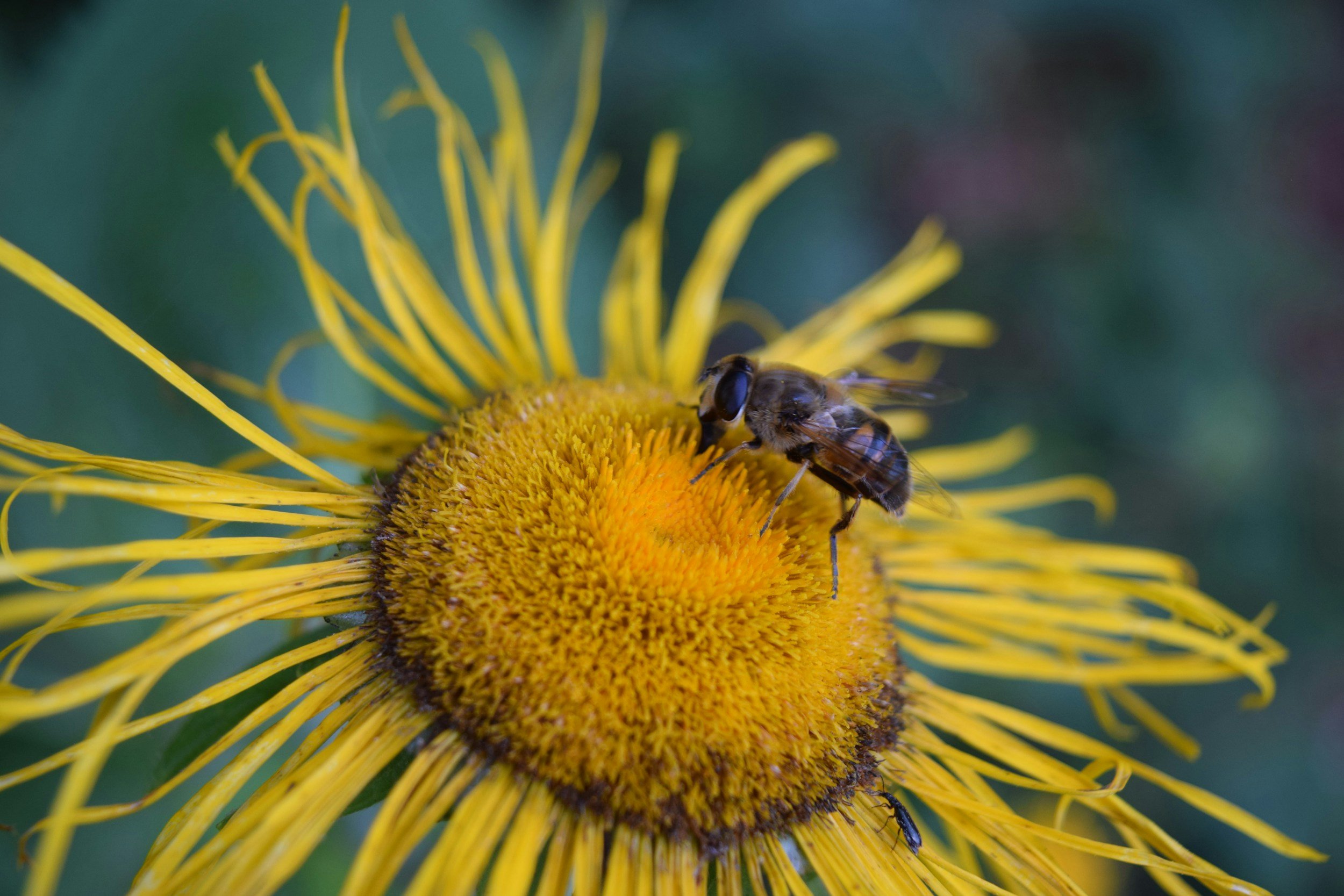
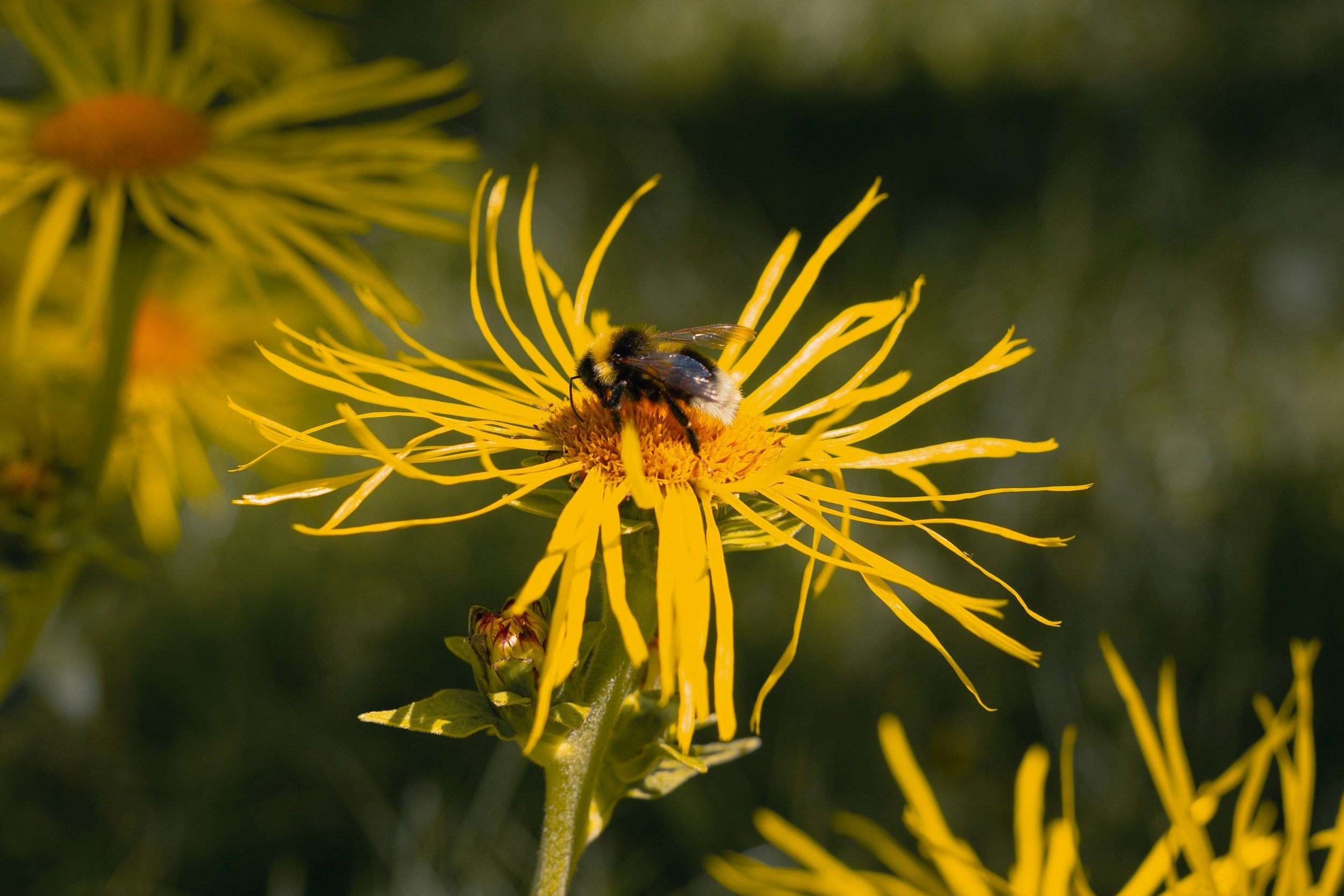
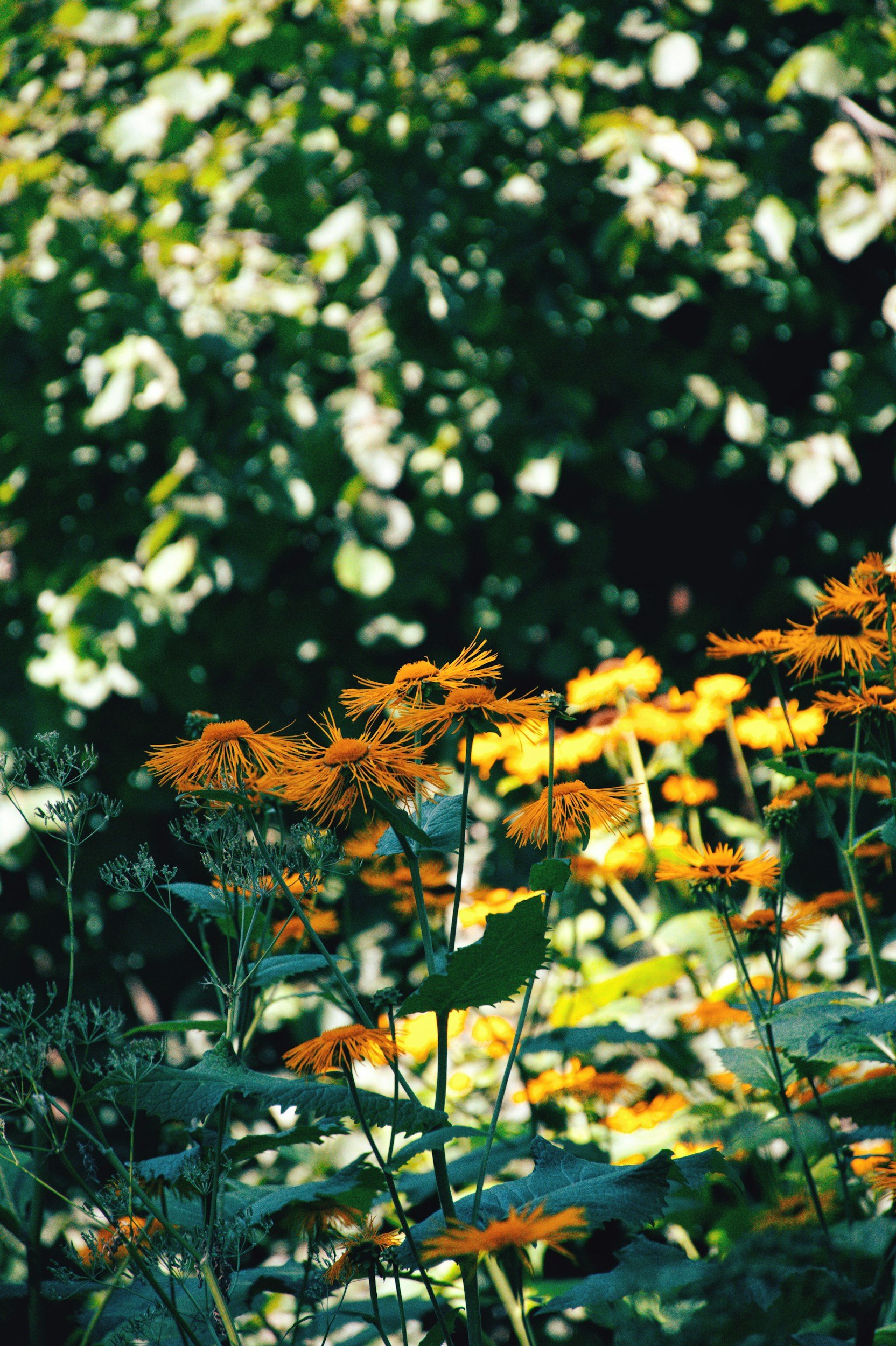

Sources
Bartram, T. (1998). Bartram’s Encyclopedia of Herbal Medicine. Constable.
Fisher, C. (2009). Materia Medica of Western Herbs, (2018 edition). Finchley Road, London. Aeon Books.
Hedley, C & Shaw, N. (2020). A herbal book of making and taking. Finchley Road, London. Aeon Books.
Hoffmann, D. (2003). Medical Herbalism: The Science and Practice of Herbal Medicine. Healing Arts Press.
McIntyre, A. (2019). The complete herbal tutor, revised and expanded edition. Finchley Road, London. Aeon Books.
Plants of the World Online | Kew Science. (n.d.). Plants of the World Online. https://powo.science.kew.org/
Disclaimer: This page is for educational purposes only. Consult a qualified medical herbalist before using herbs, especially during pregnancy, when trying to conceive, while breastfeeding, for medical conditions, or with children.
Read the full disclaimer → Medical Disclaimer.





